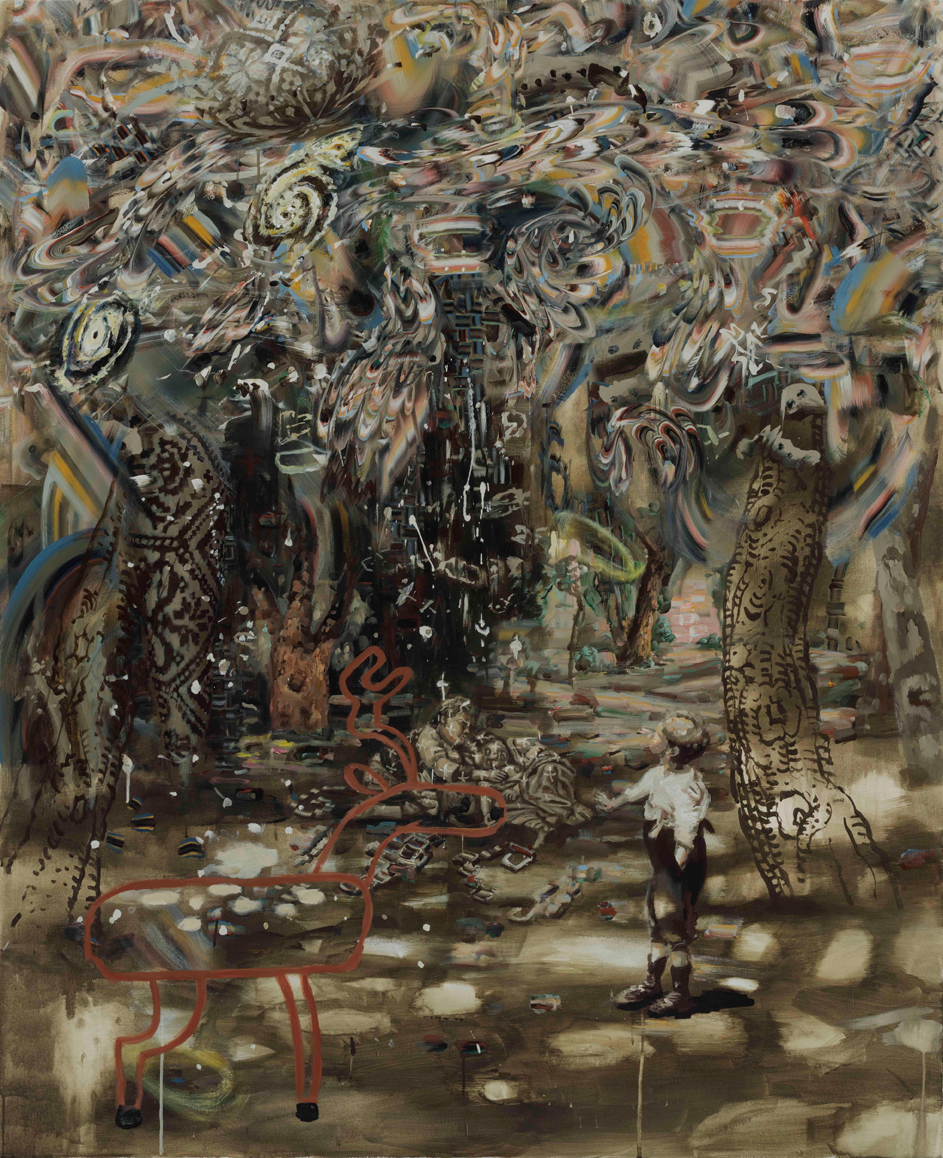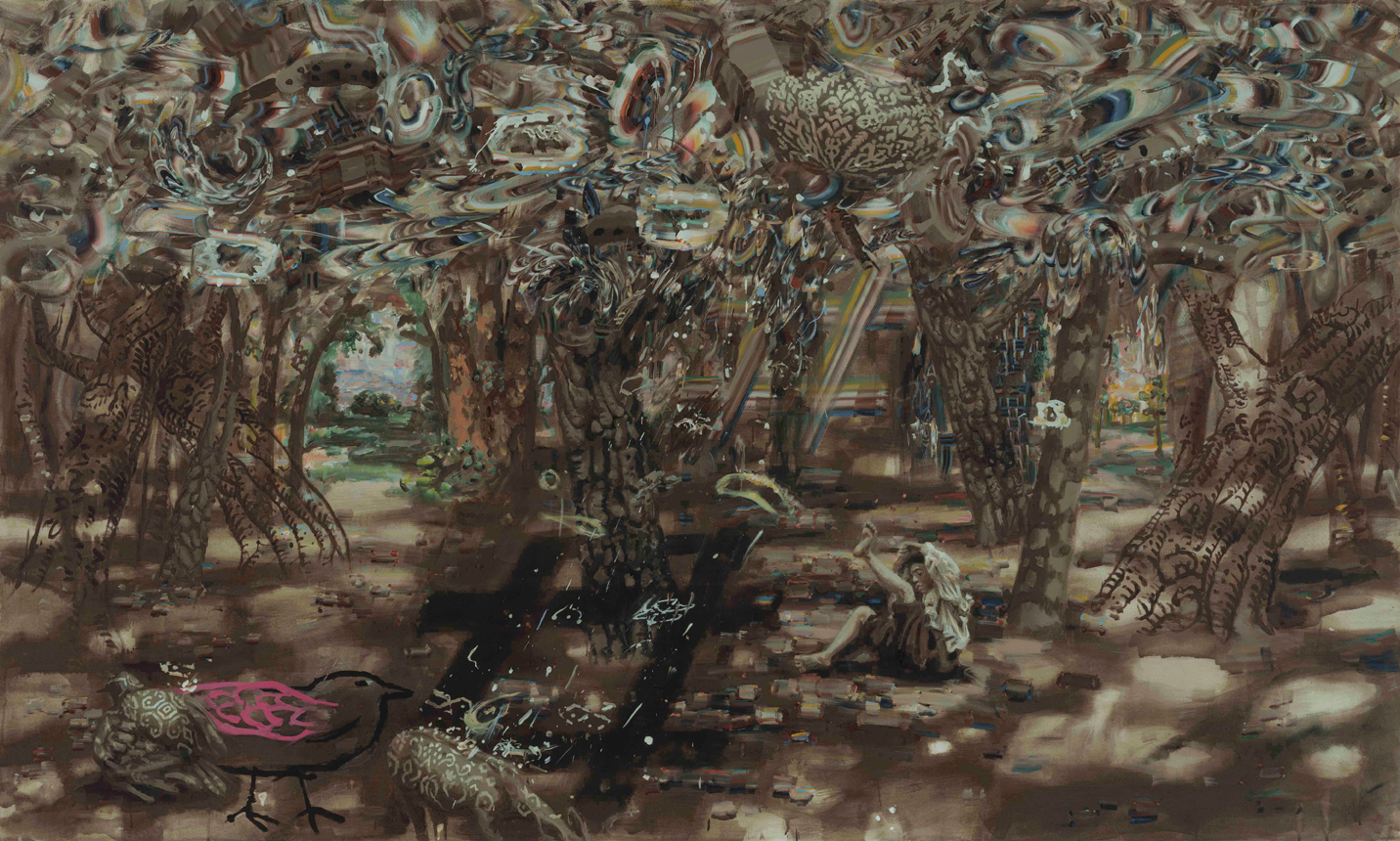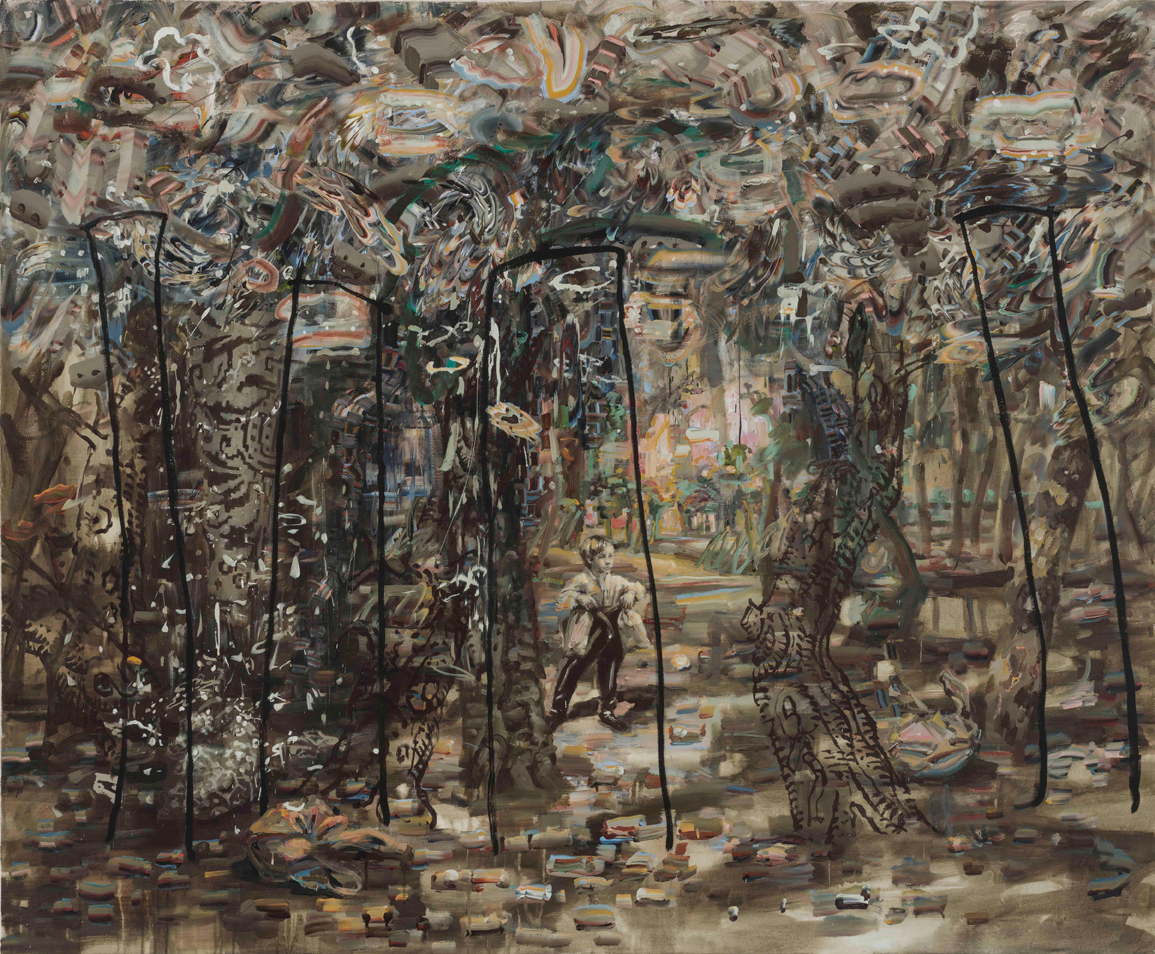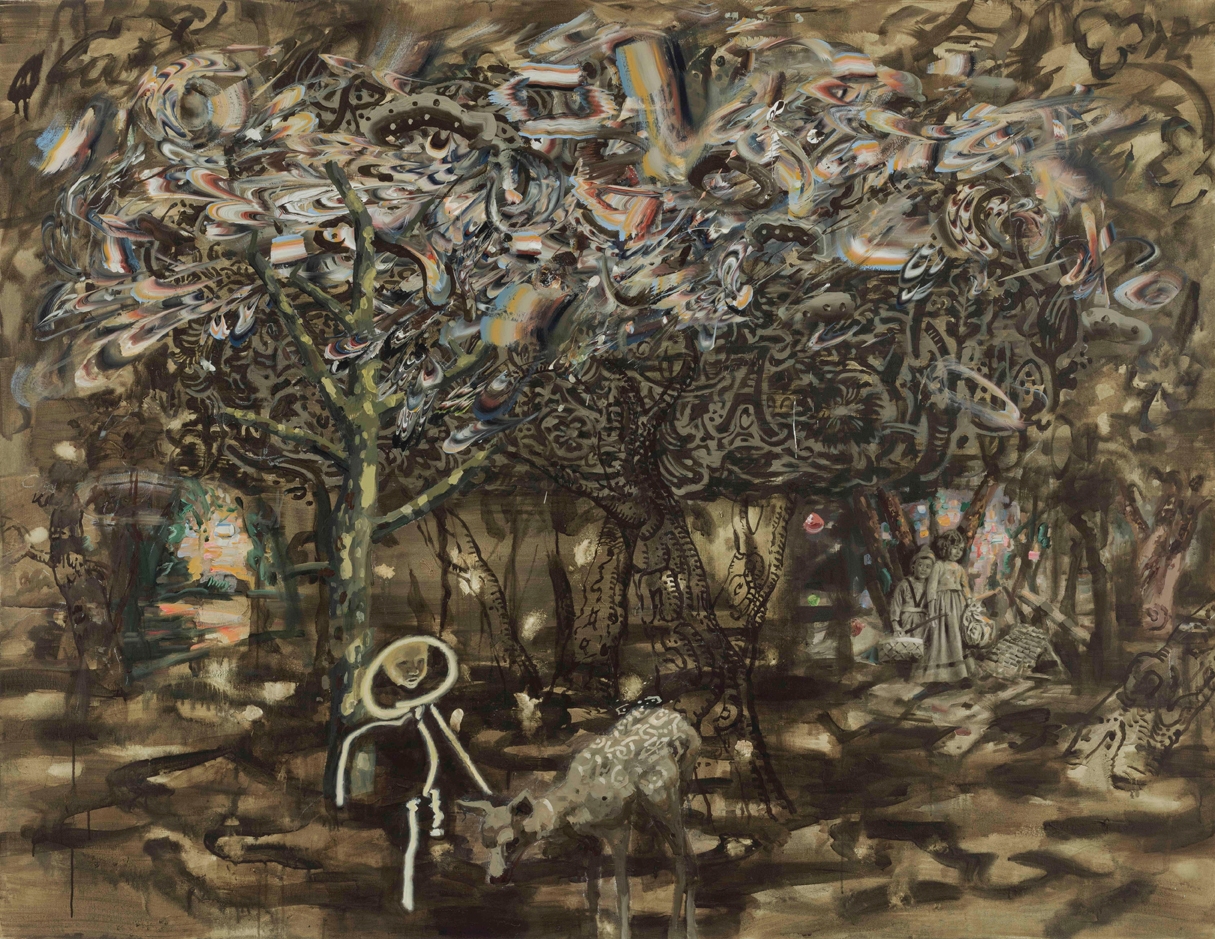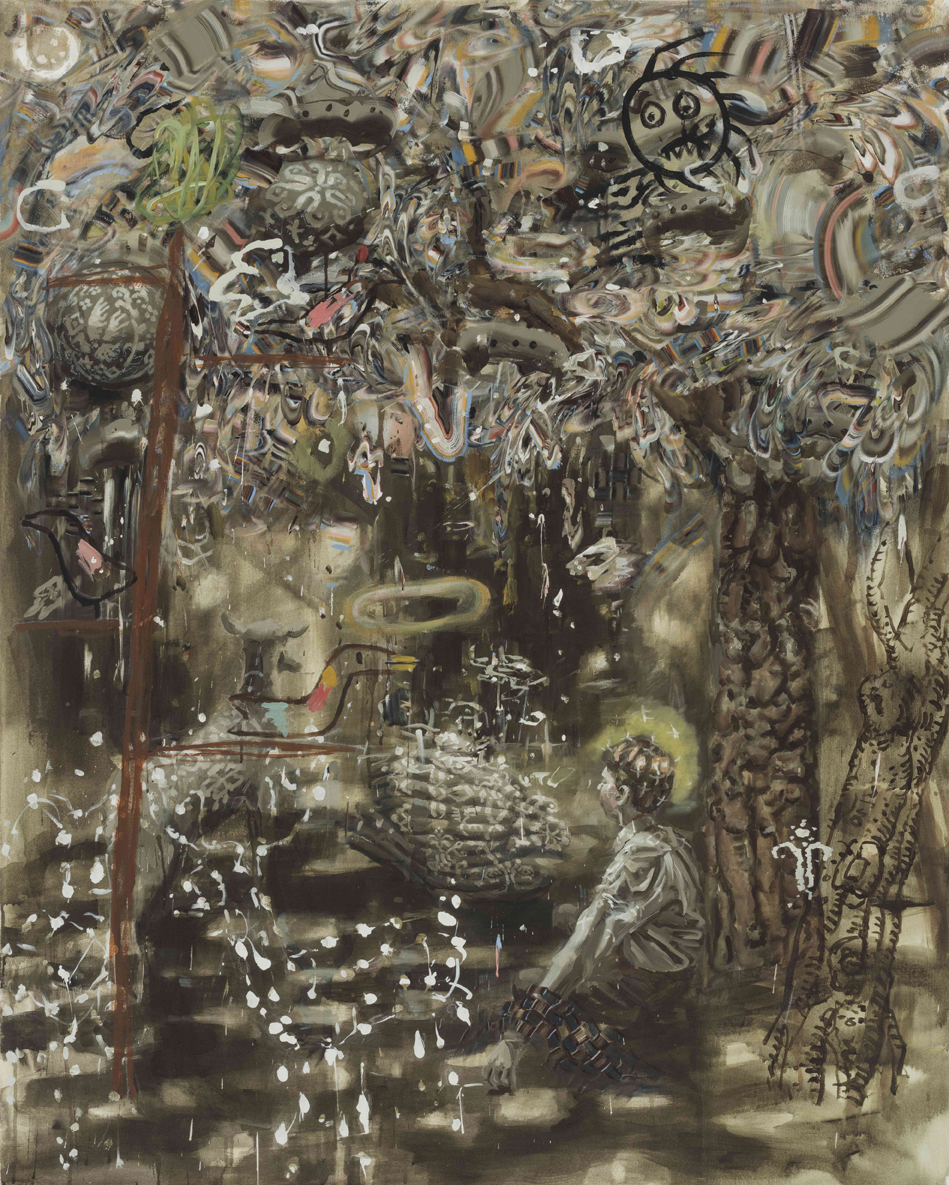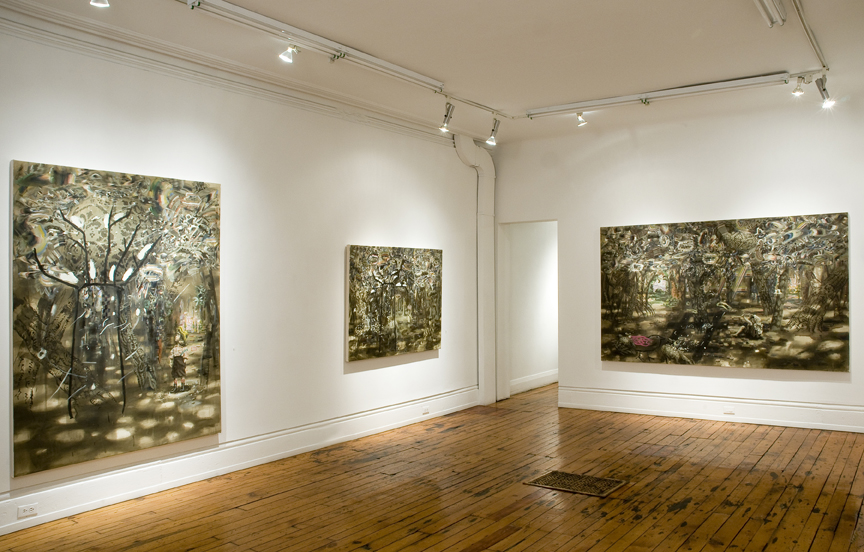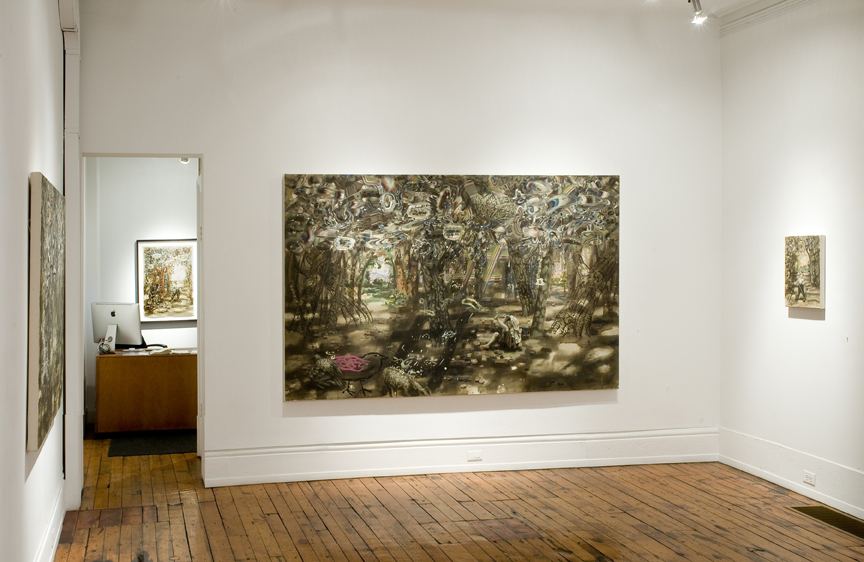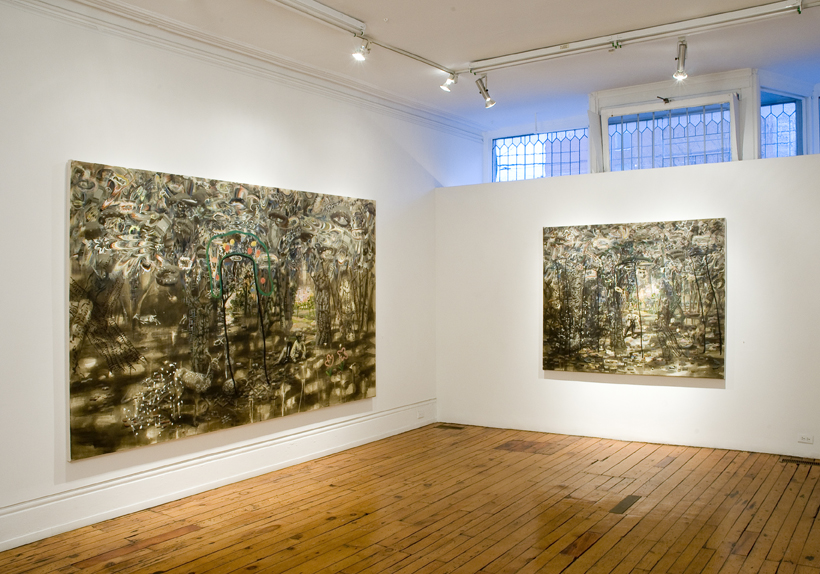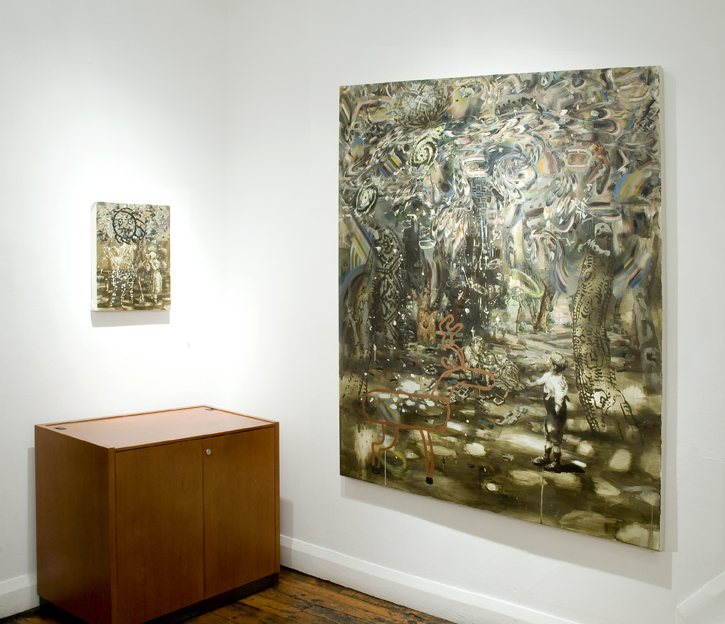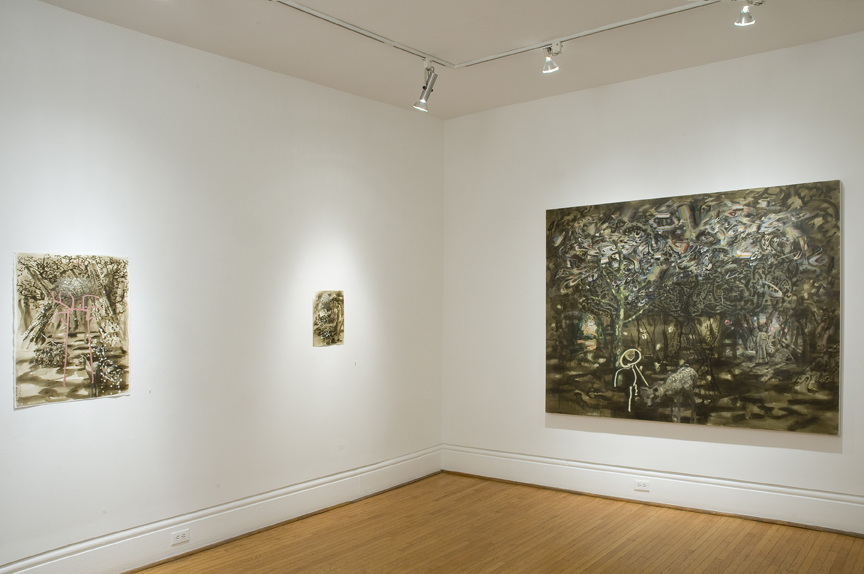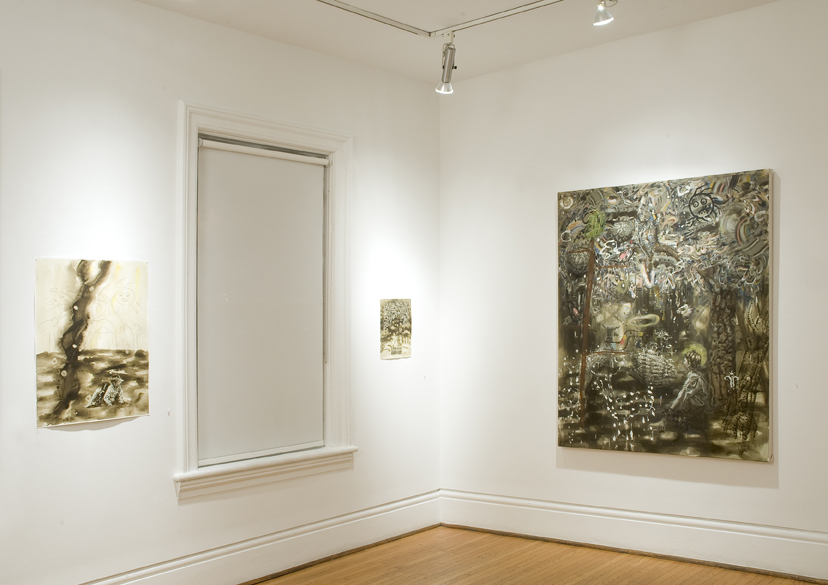The Fall
Carol Wainio
new paintings and works on paper
February 19 - March 19, 2016
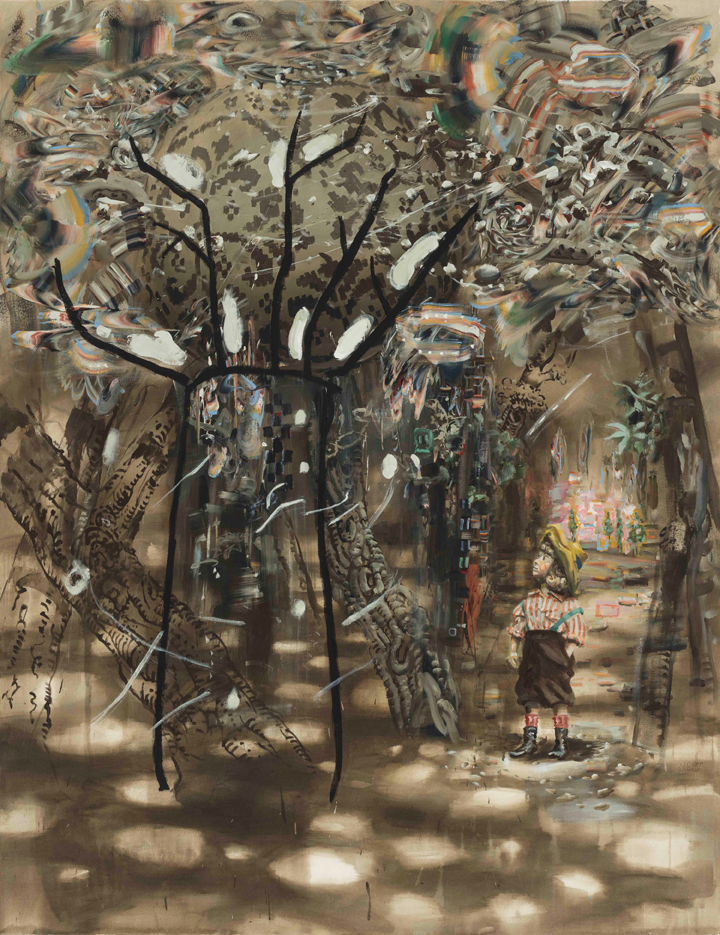
A long winter’s tale. A well worn groove. A changing deer. A transforming boy. A time of want. A promise of riches.
Lost in the forest, figures of historical narrative tread the shifting ground of seasons.
Carol Wainio
"(Carol Wainio) uses the slow, complicated and historically loaded medium of painting to create both visceral and visually discursive spaces, places where representations of past and present may meet “along the road.” Her work reflects a process of drawing together diverse references: Western history and emerging economies, scarcity and excess, long ago and far away—all expressed through various forms of visual representation, encompassing everything from “high art” to the vernacular—are explored and reimagined in painting."
Marie-Eve Beaupre, Montreal Museum of Fine Art, accompanying text to the group exhibition Her Story Today, October 8, 2015 - August 7, 2016
Carol Wainio was born in Sarnia, Ontario in 1955. After studies at the Nova Scotia College of Art and Design and the University of Toronto, she earned an M.F.A. from Concordia University in 1985. She taught in the Visual Arts Department at the University of Ottawa from 1987 to 1989 and was an assistant professor in the Department of Visual Arts at Concordia from 1989 to 1998. She lives and works in Ottawa, where she is an adjunct professor at the University of Ottawa. Her exhibition The Book, curated by Diana Nemiroff for Carleton University Art Gallery, surveyed works from 2002-2010 and toured extensively in Canada. A comprehensive hardcover catalogue is available. An exhibition of recent work, Old Masters, was organized by Crystal Mowry at the Kitchener Waterloo Art Gallery, March 8 - April 28, 2013. Wainio's work was exhibited at the Montreal Museum of Fine Arts as part of the group exhibition Her Story Today, October 8, 2015, to August 7, 2016. Wainio was a recipient of the Governor General's Award in Visual and Media Arts in 2014.
Emergence and Ruin in Carol Wainio
by Andy Patton
Carol Wainio is a wonderful and troubling painter. For decades, a constant inventiveness in the ways of handling paint, of creating figures and spaces, has distinguished her work. But this restless ingenuity doesn’t direct attention on the artist behind the work. Instead it feels necessitated – by what I can’t say, except that something seems to act on the paintings from outside. Once this might have been called “historical necessity,” when artworks were still understood as requiring that we change our lives. Wainio’s works could be taken as History Paintings (like Delacroix’s Liberty Leading the People), though ones made for a world in which history seems to have vanished, leaving behind a wreckage through which she is picking her way.
Wainio has a deep knowledge of a certain history. She keeps a large archive of illustrations from children’s books in her studio, and spent time at a residency in connection with the Walter Benjamin Children’s Book Collection at the University of Frankfurt. The paintings in her current exhibition, titled The Fall at Paul Petro Contemporary Art, appear to retell a familiar story made strange. Yet Benjamin has said, “History decays into images, not stories.” The stories in Wainio’s paintings are overtaken by images. These images are further complicated by the range of techniques used to represent them. Surfaces the color of mud are transformed into a forest populated by odd figures, many taken from those children’s books consigned by now to history. Her always-growing vocabulary of images, which continues from one exhibition to the next, includes many that act like stock figures for her: a “deer” made of Christmas lights that could just be dabs of white paint; letters of the alphabet strewn about on a forest floor like literate garbage; trees whose “leaves” are in one painting a jumble of written words, in others, swirls of marbled paper; a well turned-out Edwardian child bound for the playing fields of Eton, standing by his chair; birds, strangely decorated as an Easter egg might be, and a wolf similarly patterned; huddled urchins and dapper children gazing at the forest that surrounds them; trees whose trunks are woven together like a basket; a gingerbread house; a little girl with a basket, what appears to be her thought balloon gone blank while another floats away; distant colourful landscapes happily idealized, glimpsed at the end of a long alley of trees.
The children carry with them the presence of the past, a strange sense of being stale-dated. They could be lost in the forest, but that forest is a forest of symbols. “Trees” often appear as painted black outlines, reduced to the crudest of signs (though from one painting to the next these transmute into columns or perhaps the cylindrical cone of some tiny hurricane). Some, representations of representations, imitate ink drawings or etchings, while others look like illustrations painted “from life” after having escaped into the real world. The result is a dizzying array of different representational statuses.
Some objects are “real” within the painting while others take the stage as images torn from the context or period that had been their home. Perhaps this accounts for the feeling of being lost as a viewer: the world that could have given meaning to these things has disappeared.
Because various painting techniques and representations continually alter our perceptions, it’s not always possible to identify what you see. Yet the painting doesn’t fall apart; it’s pulled together by its clay-like monochrome structure, by the way Wainio’s light and space knit figures together. At times elements or characters appear in a context where they gain or lend meaning to what surrounds them. Elsewhere they appear exiled, arbitrary, and foreign, dropped into a landscape which neither informs them nor is informed by them. “Meaning” – whatever that is – seems to be ceaselessly emerging or ceaselessly ruined. Narratives remain localized: a narrative that could stitch things together begins to emerge in some small patch of the painting, where a deer might be fleeing from something undisclosed. But that possible storyline seems to collapse when you try to take in the painting as a whole, with its patchwork of quoted imagery. Yet the paintings don’t fall into a meaningless disorder. What ties it together are opaque and intuitive decisions I couldn’t follow, but which emerge from the practical logic of pushing paint, of assembling a work. It escapes the explicit quality of words and thought.
Those children, individually or in groups, seem to be passive witnesses to what appears, and our surrogates or avatars within the space of the painting, seeing for us in its flickering muddy light. For years, Wainio’s paintings have emerged from what seems like sheets of mud, their images forming out of a primordial clay. That, too, is part of the work: things feel for a moment more malleable, though more anxious. But what are we to make of this insistence on painting illustrations from children’s books? Are we children imagining the world, imagining that we actually see it as it is? Are the paintings just a way of filling our heads with images that substitute for what is real? Perhaps the paintings elicit in some small way the particular quality of imagining that evaporates as childhood fades, replaced by a more stolid sense of reality. Gazing up at the trees or a nearby wolf, the painting seems to coax from me some slight hint of what it might be like to see things as though from inside the painting itself.
What is it that the paintings testify to? There is a storm brewing overhead, tossing around the marbled paper foliage of the trees. The looming crisis isn’t specified. Is this an ecological crisis? A break in our link to the natural world? Is it still possible to grasp some connection within this forest of images, or to find our way out of it? “The ‘state of emergency’ in which we live is not the exception but the rule,” wrote Benjamin. If we should attend to anything in this exhibition, let it be the “craft retelling” of this kind of anxious and prophetic insight, arresting the erosion of experience in writing it out by hand.
- Andy Patton, reprinted with permission from momus.ca, http://momus.ca/emergence-and-ruin-in-carol-wainio/














